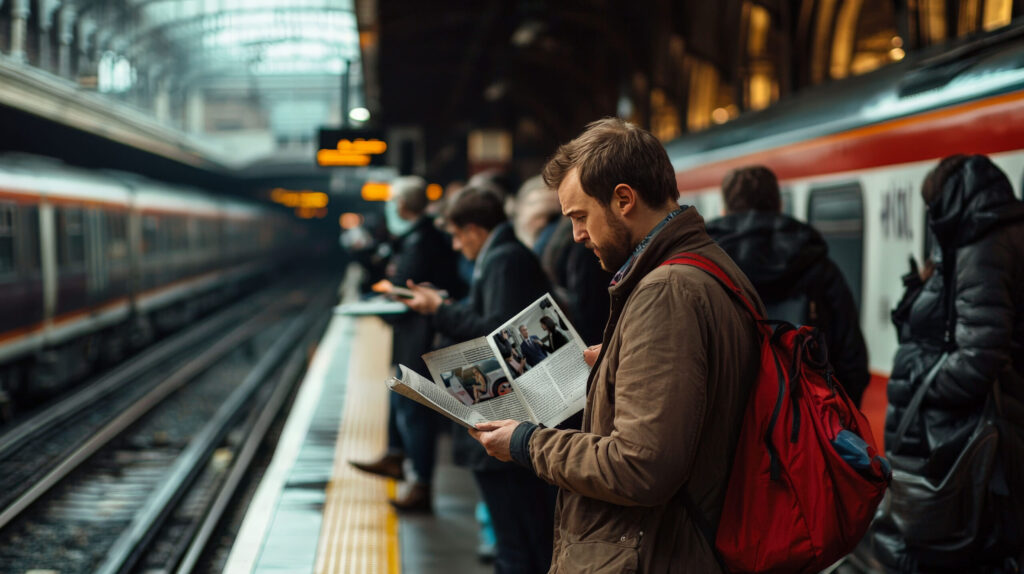5 on-camera interview tips for success
What makes a successful video interview? Jamie Wood, former Executive Producer at Sky News and now Head of Communications and PR Services here at Sticky, shares his top interview tips.
A quick sweep of your preferred social channels will reveal reams of video content, churned out by big brands and your mates alike.
And in an age where thought leadership and opinion pieces are only gaining in both frequency and popularity, interviews that deliver informative or inspirational experiences direct to camera can be a great way to connect brands with audiences in the most immediate, accessible format.
From high-flying execs to b2b subject experts to celebs, we’ve interviewed a vast range of subjects, so we know first-hand that it’s not as straightforward as ‘lights, camera, action!’. Here are some of Jamie’s top tips…
Keep your interviewee relaxed and informed
The best video interviews are the ones that allow the interviewee’s personality to shine through. But for that to happen, they need to feel relaxed in an environment that, for most of us, can feel unnatural at best – and downright terrifying at worst.
It’s important to create an atmosphere on set that encourages people to be themselves, even while on camera. ‘Try to build a rapport with your subject off camera, and they’ll feel much more relaxed talking to you on camera,’ Jamie advises.
You should also make sure they are as prepared as possible before the big day. Make sure you’ve covered the basics beforehand:
- Any clothing they need to avoid? Intricate patterns are a no-no on camera.
- How big is the crew? Being greeted by 15 people when your subject expected three will put anyone off.
- How long will the interview last? Knowing what’s expected of them will help your interviewee to focus.

Photo credit: Sam Johnson/PA Media
Think carefully about framing
Once you’ve built up a rapport with your interviewee, you don’t want to let that good work go to waste by plonking yourself behind loads of equipment. ‘It’s important to maintain eye contact with your interviewee,’ says Jamie. ‘Make sure you tell them to focus on you, and not the camera.’
Not only will this make the interview feel more natural, but it will look better on screen too. Frame your interviewee to one side of the shot and position yourself on the opposite side so that their eyeline is off camera.
‘Talking to camera or looking directly “down the barrel” used to be thought of as confrontational,’ says Jamie. ‘And while audiences are now getting used to this style, it requires more confidence from the interviewee and is harder to get right.’
Remember to make sure you’re at their eye level; you don’t want it to appear as though the interviewee is looking up, or down, too much. Don’t be afraid to hop on a stool if necessary!

Photo credit: Sam Johnson/PA Media
Make sure you’ve set up correctly
‘Think about your background,’ says Jamie. ‘A relevant backdrop gives context and helps viewers understand what’s going on.’ For example, if you’re interviewing a small business owner, let’s see them on the shop floor. A flight school pilot? Show us the the inside of the hangar. It will make for a far more interesting video than the inside of an office or, worse still, a poorly executed green-screen nightmare.
Carefully check the ambient sounds in your filming environment. Is there a low hum from the air conditioning? Are there people talking in the background? ‘You may not notice it in real life, but you’ll hear everything once you’re editing your footage’, Jamie warns.
Sound testing is also an important time to get your interviewee involved, helping them to feel comfortable with the crew and equipment before filming begins.

Photo credit: PA Media
Ditch the script
A script can make things feel awkward and forced when you want your interviewee to come across as natural and relaxed as possible.
‘There’s nothing worse than someone sounding like they are reading out a prepared statement, staring wide-eyed at camera and coming across like a robot,’ says Jamie. ‘Make sure you take time to chat through the questions, keep it relaxed, have a genuine conversation on your chosen topic and listen carefully to the answers.’
Have your desired outcome for the piece in mind, but don’t push it. As Jamie says, ‘The best interviews come from a genuine rapport, with the benefit of being able to just shoot it again if you’re not happy with the first attempt.’ A good post-production team will be able to edit your interviewee’s best bits, so make sure you encourage them to elaborate and give context.
When you think you’re finished, start again
Although it’s important to keep things as natural as possible, a good interviewer will have one eye on the finished product, and what’s needed to get there.
It’s always a good idea to start with the easy questions first, but more often than not your interviewee’s answers to these questions will feel a little stiff. If things go well and you have time, Jamie advises starting from the top and re-recording the earlier stuff once they’re warmed up – you’ll be surprised how different they sound on take two.



